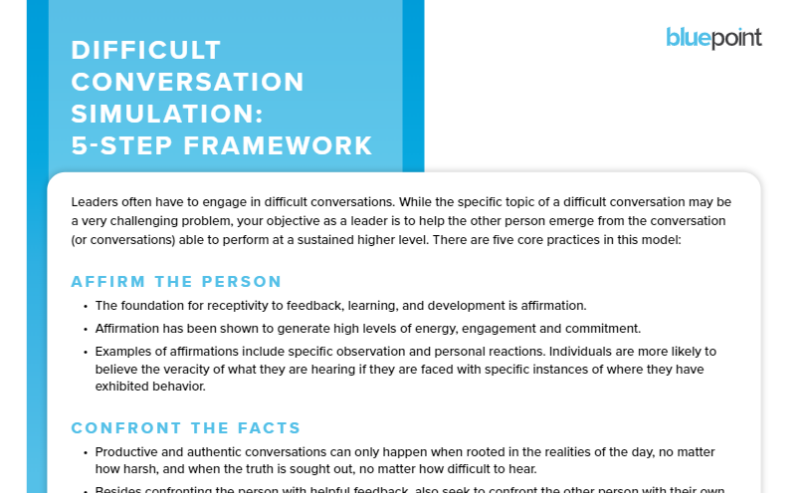Did you know that leaders can create extraordinary alignment through powerful storytelling?
Studies led by neuroscientist Paul Zak have discovered that when we listen to stories, our brains produce a neurochemical called oxytocin. Oxytocin is a bonding chemical that tells our brains that the person who is talking can be trusted, and, therefore, that we can lower our suspicions. In other words, stories bond and align individuals.
Oxytocin also has the ability to enhance our empathy for others by allowing us to experience vicariously what the person in the story is experiencing. Storytelling captivates the human mind because stories convey meaning, generate emotions, and inspire action. Leaders tell stories not to entertain, but to build alignment, commitment, and engagement.
Storytelling is important for humans, who rely on trust in virtually all social interactions. Good stories captivate people and make an impact on how they view both the storyteller and the circumstance illustrated by the story. Compelling stories do not happen by accident though; they are intentional and move toward an established outcome.
This principle applies to storytelling in both personal and business interactions. Let’s take the example of a manager who wishes to introduce a new marketing strategy to her team. When the manager shares compelling anecdotes about the successful implementation of this strategy at previous organizations where she has worked, the team becomes more confident in the plan.
Developing the Storytelling Skill
Powerful storytelling is a skill that must be practiced and honed to become effective. Use the following framework to advance your skill.
Create a Clear Vision
Start by asking yourself the following questions. How can I use storytelling to communicate effectively with my team and create alignment toward my team’s compelling purpose? As you develop your own inventory of stories, remember that powerful stories are:
- Clear: Can the listener readily identify the purpose and lesson of the story?
- Concise: How might you shorten the story without diminishing its power?
- Clutter-free: How might you share enough detail to illustrate what is happening without distracting from the story’s purpose?
Choose a Type of Story
The next phase involves pushing yourself to excel in storytelling across various settings, catering to diverse objectives and aspirations. Over the next few weeks, look for stories that you can share with your team that will encourage them to align their efforts. Consider the different types of stories that are told and the purpose of each:
- The Personal Story : Builds a personal connection and forges trust between a leader and team members.
- The Team Story: Creates commitment and engagement by providing direction, inspiration, and guidance to team members.
- The Organization’s Story: Aligns people by revealing the organization’s mission, vision, and purpose.
You’ll want to be flexible in your storytelling and adapt it to the intended type and purpose.
The Personal Story
As a manager, sharing stories forms personal connections with those you may seek to influence, including members of your team. Such stories are best when they reveal something important about you, such as your aspirations, beliefs, personal experiences, and history.
Think of a personal story that will show your team who you really are. What story can you share with your team that will help to build a connection? For example, you might share a story that reveals your personal beliefs, values, vulnerabilities, or humanity, or one that shows how an experience changed your perspective on life.
The Team Story
Crafting a compelling story is key to establishing trust and increasing commitment among team members. When team members feel connected to a common purpose and vision, they are more likely to be invested in the team’s success. A great way to create this connection is by incorporating vivid imagery and powerful language when sharing the team’s plans, challenges, and opportunities. What story can you share that will provide direction, inspiration, and guidance to your team members?
The Organization’s Story
An organization’s story shows what is unique or special about the organization. These stories convey the organization’s purpose and illustrate its culture. What story can you share that is unique to your organization and that demonstrates its values, mission, and reason to exist?
Gather Feedback
Finally, begin to challenge yourself and ask for input from others. Share one of your three stories with someone else and ask for his or her feedback on its effectiveness and on how you can improve it.
As you begin this challenge, keep in mind that the most powerful stories are clear, concise, and clutter-free. Long-winded asides and pointless details will bog down a story and detract from to its effectiveness. Strip out unnecessary details and tangents that don’t actively paint the picture, contribute to character development, or add depth to the plot.
About The Author

Christina Beaulne
Christina is a Senior Instructional Designer for Bluepoint. She is responsible for creating curriculum to help leaders develop their coaching skills to not only achieve personal and organizational goals, but also to create extraordinary impact in the lives of employees and the community at large.
Related Resources

Beyond the Individual: How Coaching Transforms Teams
leading-teams

7 Leadership Strategies to Combat Change Fatigue
leading-change

Difficult Conversation Simulation: 5-Step Framework
communication
Subscribe to newsletter
Subscribe to our newsletter today and receive innovative, insightful and thought provoking resources (videos, webinars and articles) all effective tools for developing leadership talent.
Connect with Us Today!
This is a gated resource. Contact sales at info@bluepointleadership.com for more information or reach out here: Contact Us
This is a member-only resource. Contact sales at info@bluepointleadership.com for more information.


